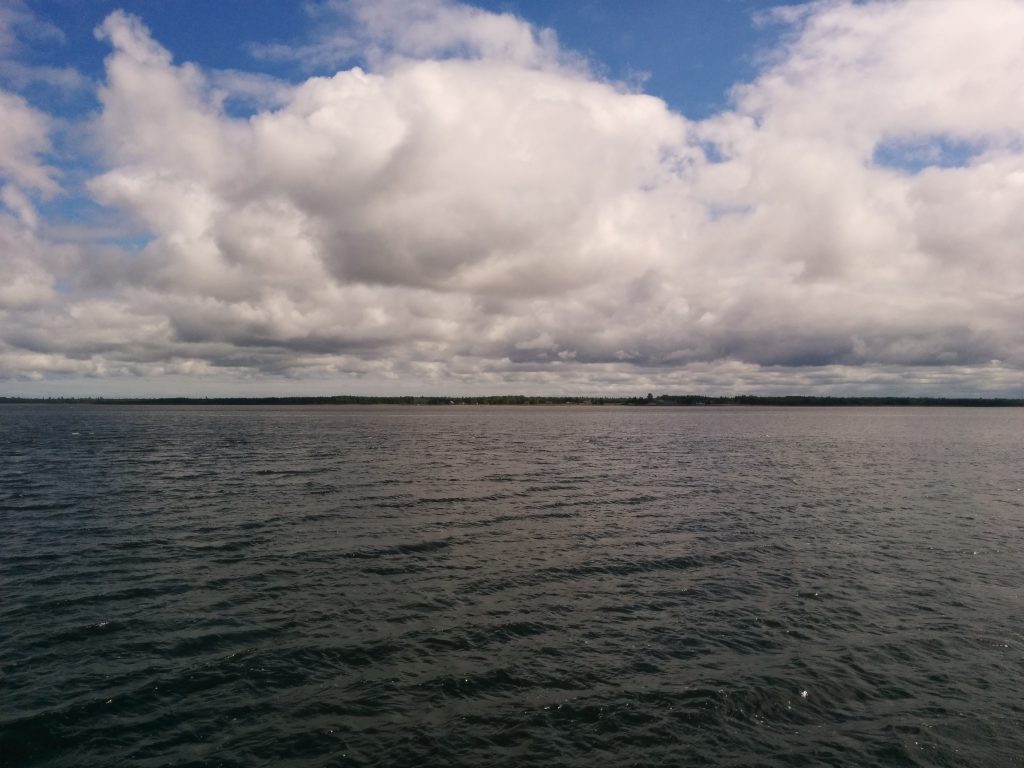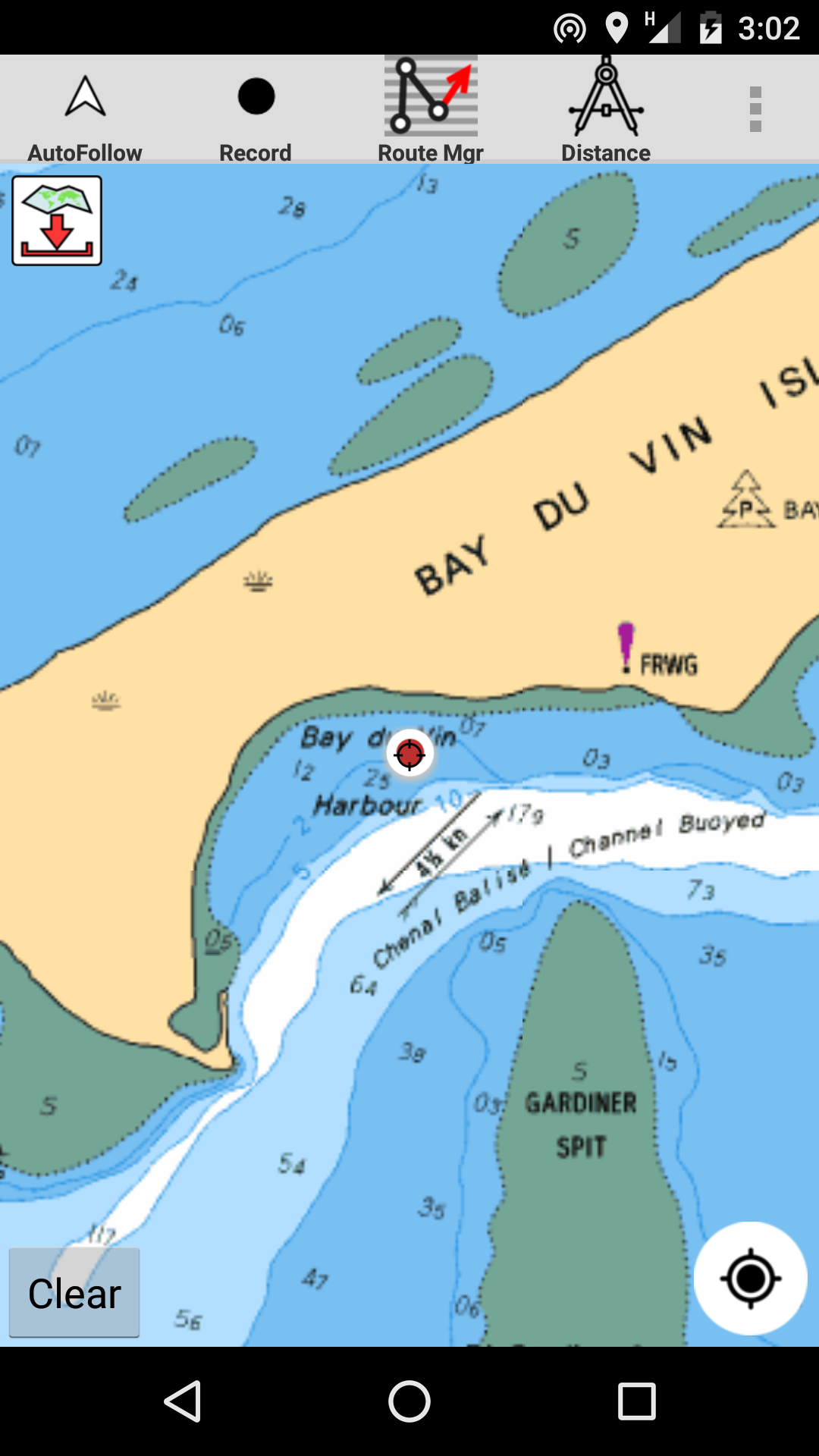Friday, July 8th
We decided to stay another night anchored in Miramichi Bay. The next port we’d like to reach is about 55 miles away, of which around 45 miles are open to the East. A stiff wind has been blowing from the East all day, and I suspect the ocean is pretty rough along our intended route.
There isn’t much here in the bay. Bay du Vin Island, which surrounds us for about 180 degrees, is uninhabited. On the other side of the channel, about 5 miles away, are a few homes and a working aquaculture site, possibly oyster beds.

Our primary anchor is a 45-lb Manson Supreme, considered a “next generation” anchor according to the current state of the art. Also aboard is a 45-lb CQR, the cream of the last generation thinking on anchors, and a spare Fortress anchor, a more classic design.
The Manson is a beast, and it’s held exceptionally well each time we’ve set it. It’s attached to one shot (90 feet) of chain, and another 150′ of 3-strand nylon line. Typically we don’t anchor in waters deep enough to need more than just the chain. To absorb any shock loading on the chain, distribute the strain, and keep the attachment point as low as possible, we use a professionally-made nylon anchor snubber. This clips to the chain just at the water line and has two lines running back through chocks on either side of the bow.


The whole point of all this gear is to keep the pull on the anchor nearly horizontal, so any strain digs the anchor further down into the bottom. Weighing anchor consists of motoring toward it, retrieving chain until the strain is tugging the anchor up vertically and out of the bottom.
To make sure we’re secure, I run an app on my phone that displays my current location on a chart. I can zoom way in, place a waypoint on my current location, then compare that to wherever I am next time.

There are a number of anchor alarm apps on my phone, as well as on some of our navigation electronics. I’ve used these when uncertain about how the anchor is set, or if I need to know immediately if we’ve moved outside a given area. They tend to be somewhat complicated to set up, drain battery power in use, and produce false alarms when the wind or current changes, if not set exactly right.
Weather permitting, we hope to be underway again tomorrow.